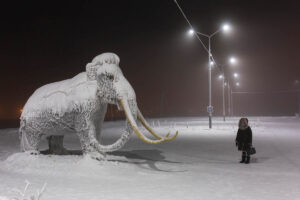 Raghuvamsh Chavali
Raghuvamsh ChavaliThe annual Geminid meteor shower peaks tonight and tomorrow, December 13 and 14. The impressive meteor shower is an excellent chance for photographers to get out and enjoy one of nature’s most beautiful spectacles, and get some fantastic shots, too.
As SciTechDaily explains, the Geminids are different from most meteor showers. Instead of coming from a comet, the Geminids originate from an active Apollo asteroid, 3200 Phaethon. Named after the Greek myth of Phaëthon, this asteroid was the first to ever be discovered using photos captured by a spacecraft, which is a fun bit of trivia. It has a consistent orbital path, a 35-year observation arc, and an average orbital speed of 45,000 miles per hour (19.9 kilometers per second).
The Geminids appear in the night sky as Earth travels through debris left behind by 3200 Phaethon. In optimal viewing conditions, people can expect to see up to 120 meteors an hour, or an average of one every 30 seconds. However, this year, the peak of the Geminids, which will be active for a week, overlaps with a full Moon, inhibiting viewing of fainter meteors. Still, photographers can expect bright, colorful streaks across the sky.
PetaPixel‘s guide to photographing the Geminid meteor shower notes that photographers will want to plan ahead. The Geminids appear roughly in the northeast sky this time of year, so photographers will want to consider their compositions.
As for gear, a tripod is a must, of course, as photographing the Geminids requires long shutter speeds. A fast, wide-angle lens is often the best choice, although it is possible to use longer focal lengths. It is impossible to predict when and where a meteor will streak across the sky, so photographers should expect to capture a lot of frames over and over. An extra battery is always a good idea.
The makers of PhotoPills, an excellent app for photographers, published a new how-to video for photographing the Geminids, too. The video below includes tips for planning, selecting the right gear, and finding optimal camera settings for photographing the Geminids.
“For this year’s Geminids, the bright Moon will light up the sky and greatly reduce the number of visible meteors,” says Bill Cooke, lead for NASA’s Meteorite Environment Office at the Marshall Space Flight Center in Alabama. “The most important thing to do, after finding the darkest place you can, is to look away from the Moon.”
NASA says the Geminids are best viewed after 9 PM local time and before dawn, with the best meteor rates around 2 AM. “Maybe bring a blanket to stay warm,” NASA adds.
Image credits: Featured image by Raghuvamsh Chavali. Chavali captured the featured photo in Orangeville, Canada in December 2023.








 English (US) ·
English (US) ·